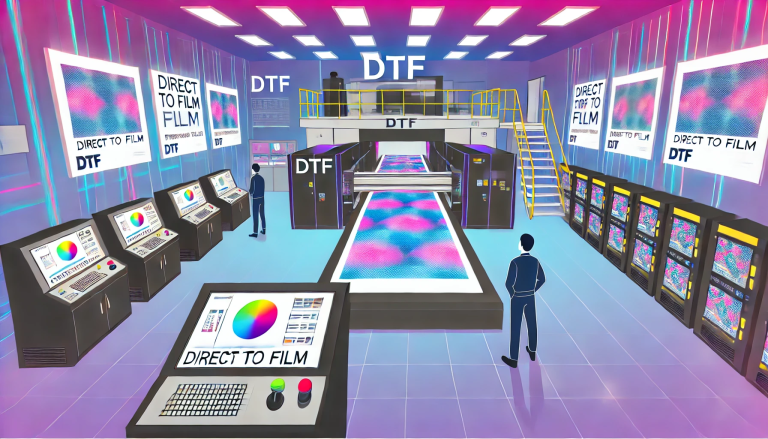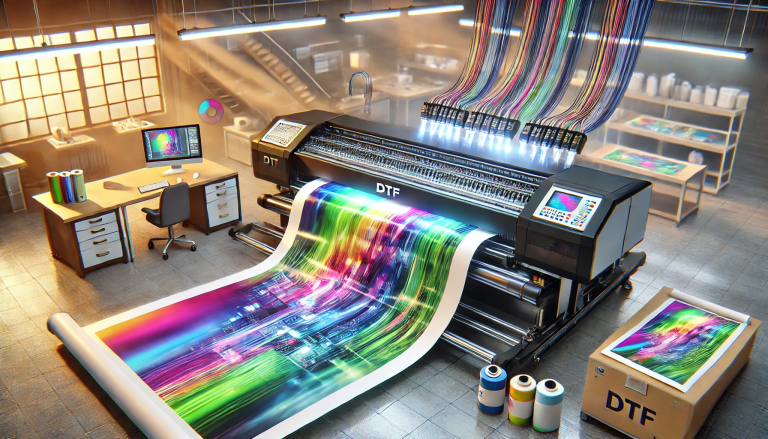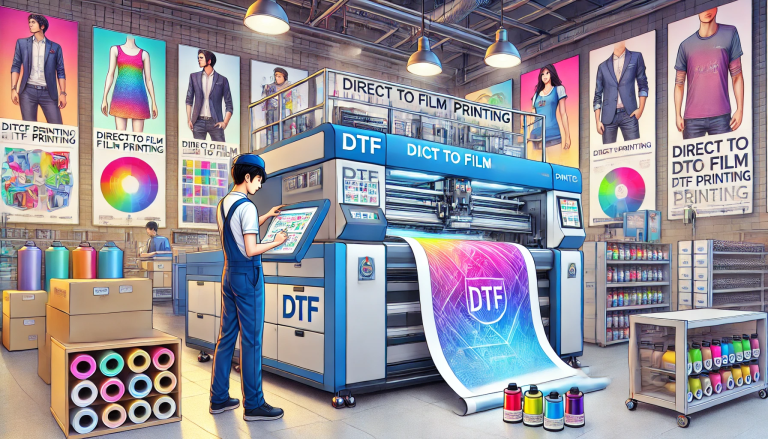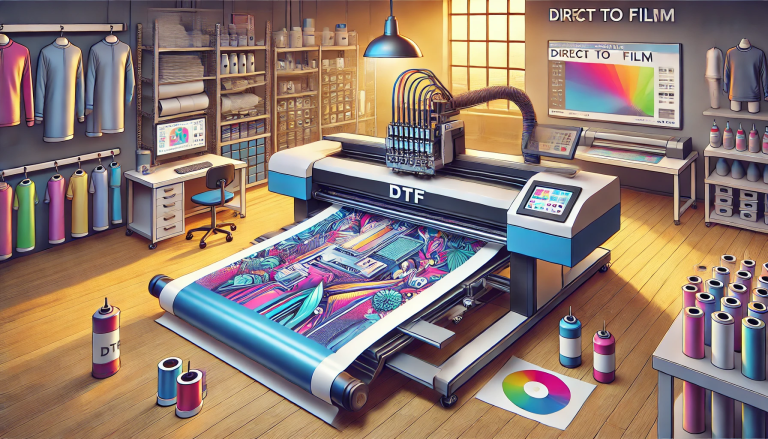“Print your best with DTF Glossy Film – one side for clarity, one side for color!” -MAXDTF- DTF sheet Factory, Direct Film Transfer Manufacturer, Made in China
Introduction
When it comes to printing on DTF (direct-to-film) glossy film, it can be confusing to know which side to print on. DTF glossy film is a type of film that is used for a variety of printing applications, including signs, banners, and other graphics. It is important to know which side of the film to print on to ensure the best quality results. In this article, we will discuss the different sides of DTF glossy film and how to determine which side to print on.
Comparing the Advantages and Disadvantages of Printing on the Glossy Side of DTF Film
Printing on the glossy side of DTF film has both advantages and disadvantages. DTF film is a type of polyester film that is used for a variety of printing applications. It is a versatile material that can be used for both indoor and outdoor applications.
One of the main advantages of printing on the glossy side of DTF film is that it provides a high-quality finish. The glossy surface of the film reflects light, which gives the printed image a vibrant and eye-catching appearance. Additionally, the glossy surface of the film is resistant to scratches and other damage, which helps to ensure that the printed image will remain vibrant and clear for a long time.
On the other hand, there are some disadvantages to printing on the glossy side of DTF film. One of the main drawbacks is that the glossy surface can be difficult to clean. Dust and dirt can easily accumulate on the glossy surface, which can make it difficult to keep the printed image looking its best. Additionally, the glossy surface can be prone to smudging and smearing, which can reduce the clarity of the printed image.
Overall, printing on the glossy side of DTF film can provide a high-quality finish that is resistant to scratches and other damage. However, it is important to be aware of the potential drawbacks, such as difficulty in cleaning and smudging, before making a decision.
Understanding the Different Types of DTF Film and Which Side to Print On
DTF (Direct to Film) printing is a popular method of printing images and text onto a variety of materials. It is a versatile and cost-effective way to produce high-quality prints. DTF film is available in a variety of types, each with its unique characteristics and advantages. Understanding the different types of DTF film and which side to print on is essential for achieving the best results.
The most common type of DTF film is polyester. This film is strong and durable, making it ideal for outdoor applications. It is also resistant to fading and water damage, making it a great choice for long-term projects. Polyester DTF film should be printed on the matte side for the best results.
Another popular type of DTF film is vinyl. Vinyl is a flexible material that is often used for indoor applications. It is available in a variety of colors and finishes, making it a great choice for creating unique designs. Vinyl DTF film should be printed on the glossy side for the best results.
A third type of DTF film is polypropylene. This film is lightweight and flexible, making it ideal for indoor applications. It is also resistant to fading and water damage, making it a great choice for long-term projects. Polypropylene DTF film should be printed on the matte side for the best results.
Finally, there is polycarbonate DTF film. This film is strong and durable, making it ideal for outdoor applications. It is also resistant to fading and water damage, making it a great choice for long-term projects. Polycarbonate DTF film should be printed on the glossy side for the best results.
Understanding the different types of DTF film and which side to print on is essential for achieving the best results. Each type of film has its unique characteristics and advantages, so it is important to choose the right type for your project. With the right knowledge and preparation, you can create beautiful prints with DTF film.
Tips for Achieving the Best Results When Printing on DTF Film
1. Ensure that the printer is properly calibrated: Before printing on DTF film, it is important to ensure that the printer is properly calibrated. This will ensure that the colors and images are printed accurately and that the film is not damaged during the printing process.
- Use the correct type of ink: Different types of ink are available for printing on DTF film. It is important to use the correct type of ink for the best results.
- Use the correct settings: When printing on DTF film, it is important to use the correct settings. This includes the resolution, color mode, and other settings.
- Clean the printer regularly: Regularly cleaning the printer will help to ensure that the print quality is not affected by dust or other debris.
- Use a high-quality film: Using a high-quality film will help to ensure that the colors and images are printed accurately and that the film is not damaged during the printing process.
- Use a lint-free cloth: When handling the film, it is important to use a lint-free cloth to avoid any dust or debris from getting onto the film.
- Allow the film to dry completely: After printing, it is important to allow the film to dry completely before handling it. This will help to ensure that the colors and images are not smudged or damaged.
- Store the film properly: When not in use, it is important to store the film properly. This includes keeping it away from direct sunlight and in a cool, dry place. How to Choose the Right Side of DTF Film for Your Printing ProjectWhen it comes to selecting the right side of DTF film for your printing project, there are a few key factors to consider. First, you need to determine the type of material you are printing on. Different types of materials require different types of DTF film. For example, if you are printing on glossy paper, you will need a glossy DTF film. If you are printing on matte paper, you will need a matte DTF film.
Second, you need to consider the type of ink you are using. Different types of inks require different types of DTF film. For example, if you are using a dye-based ink, you will need a dye-based DTF film. If you are using pigment-based ink, you will need a pigment-based DTF film.
Third, you need to consider the type of printer you are using. Different types of printers require different types of DTF film. For example, if you are using a laser printer, you will need a laser-compatible DTF film. If you are using an inkjet printer, you will need an inkjet-compatible DTF film.
Finally, you need to consider the type of image you are printing. Different types of images require different types of DTF film. For example, if you are printing a photograph, you will need a photographic DTF film. If you are printing a vector image, you will need a vector DTF film.
By taking all of these factors into consideration, you can ensure that you select the right side of DTF film for your printing project. With the right DTF film, you can achieve the highest quality results for your project.
Exploring the Benefits of Printing on the Glossy Side of DTF Film
Printing on the glossy side of DTF film can provide several benefits for businesses and individuals alike. DTF film, or direct-to-film printing, is a type of printing technology that uses a special type of film to produce high-quality prints. The glossy side of the film is the side that is exposed to the printing process, and it can provide several advantages over other types of printing.
One of the primary benefits of printing on the glossy side of DTF film is the increased vibrancy of the colors. The glossy surface of the film reflects light, which helps to make the colors appear brighter and more vivid. This can be especially beneficial for businesses that are looking to create eye-catching prints for promotional materials or advertisements.
Another advantage of printing on the glossy side of DTF film is the increased durability of the prints. The glossy surface of the film helps to protect the prints from fading or smudging, which can be a major issue with other types of printing. This makes it ideal for businesses that need to produce prints that will last for a long time.
Finally, printing on the glossy side of DTF film can also help to reduce the cost of printing. The glossy surface of the film helps to reduce the amount of ink that is needed to produce a print, which can help to reduce the overall cost of the printing process. This can be especially beneficial for businesses that are looking to produce large quantities of prints.
Overall, printing on the glossy side of DTF film can provide several benefits for businesses and individuals alike. The increased vibrancy of the colors, increased durability of the prints, and reduced cost of printing can all be major advantages for businesses that are looking to produce high-quality prints.
Conclusion
In conclusion, when printing on DTF glossy film, the image should be printed on the matte side of the film. This will ensure that the image is printed correctly and that the glossy finish will be preserved. It is important to remember that the glossy side of the film should not be printed on, as this can cause the image to be distorted or smudged.






